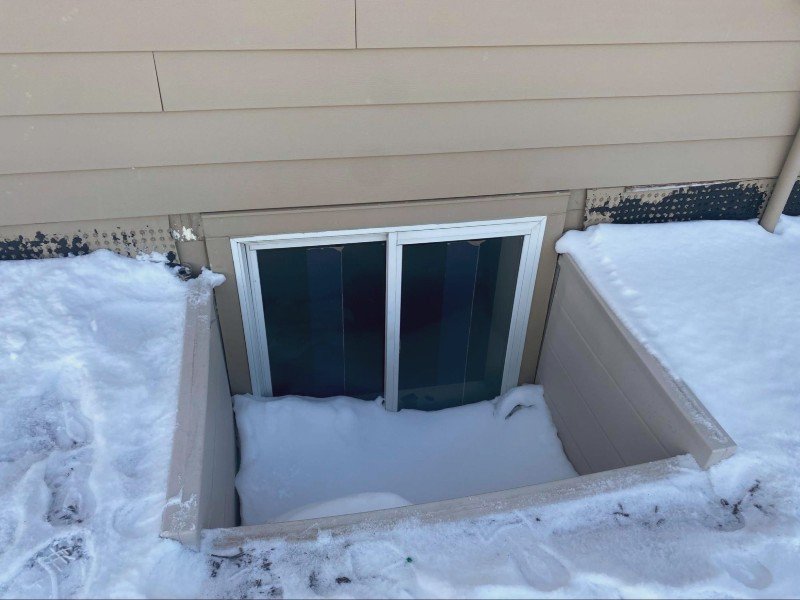Winter Wonderland
Along with the colder weather and the first substantial snowfall, this blog post focuses on the outside work you should remember to do to maintain your house through the season.
If you have a gas furnace or water heater, the exhaust needs get to the outside. Carried by pipes, the fumes either go through the side of the house or up through the roof. The safe operation of the furnace and water heater requires that the exhaust vents need to be clear of snow and have an unobstructed airflow around the terminals; otherwise, the fumes may back up into your home. Following any snowfall, especially with blowing snow, you need to check the vents to verify they are not sitting in a snowdrift or under that layer of snow. To be completely safe, clear any snow from around the vent for at least 1 meter (3 feet) to allow proper airflow. Don’t forget to also check the termination for the bathroom vent, the drier exhaust vent, the range exhaust vent, and fireplace exhaust vent if you have one. Although they might not pose a risk of carbon monoxide poisoning, they can lead to higher moisture levels in the house if they are blocked, leading to mold growth and damage to the interior components of the house.
If you are heating your house with a heat pump, clearing the snow from your exterior components (compressor and coil) is a manufacturer’s requirement. It will improve the efficiency of the heat pump and maintain the life expectancy of the appliance. Here is short report from the CBC on how to care for a heat pump in the winter. How to care for your heat pump during a winter storm | CBC News
Snow likes to settle in window wells and below grade windows. This means you need to be clearing snow from these areas as well. Even in cold winter temperatures, there is enough heat leaking through the window panes that snow will start to melt. The melting water can lead to ice buildup at the window that damage your window’s sills and frames, increasing the possibility of water leaking into the house. In addition, if you have an egress window, this needs to be clear of snow so it can serve its purpose as an emergency exit during a fire.
Your roof and raised deck are often ignored or forgotten during the winter season because of a lack of awareness of the damage that snow can pose. A heavy dumping of snow can lead to an excessive amount of weight or snow load on the roof and deck. This additional weight can lead to a structural collapse. Your deck, if built to the building code, should be able to hold 40 to 60 lbs/ft² while the roof should be able to support 20 to 40 lbs/ft². To calculate the maximum depth of snow, take the load rating (I would recommend 30 lbs/cubic foot for a roof and 50 lbs/cubic foot for a deck) and divide it by the type of snow. The table below lists the expected weight of snow under various conditions. For fresh snow, the roof can have 30/3.75 = 8 ft and the deck can have 50/3.75 = 13 ft. For a snow drift (wind-packed snow), the depth of the snow would be 30/23.41 = 1.3 feet for a roof and 50/23.41 = 2.1 ft for a deck. That is quite the difference in heights for the snow pack. For convenience, the roofing and decking experts recommend removing any amount of snow over 2 ft for a roof and 3 ft for a deck. In addition, it is also recommended that you clear all the snow on the deck or roof that is directly next to a wall because melting snow there can damage the facade of the house and, in the case of a deck, the wall and ledger board.
|
Type of Snow |
Snow density (lbs/cubic foot) |
|
Fresh snow |
3.75 |
|
Damp fresh snow |
6.87 |
|
Settled snow |
15.61 |
|
Wind-packed snow |
23.41 |
|
Very wet snow |
46.82 |
|
Ice |
57.25 |
Personal safety is very important and I do not recommend climbing onto your roof in the winter weather. If you need to clear the snow on the roof, I recommend using a snow rake or roof rake that is operated from the ground, or hiring a contractor to do the work for you.
Stay safe this winter and use these suggestions to avoid common winter concerns related to snow!
In the news:
Albion Hotel roof collapsed | CTV News
Resources:
Canada CNA preparation guide for snow load and roof collapse CNA-RC_C-bulletin-Snow-Loading-Roof-Collapse-Guide.pdf
Canadian Underwriters Article dangers of rainfall with snow on your roof: Roof collapses feared if freezing rain follows heavy snowfall



